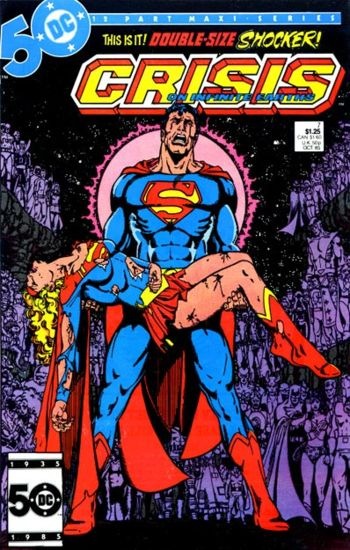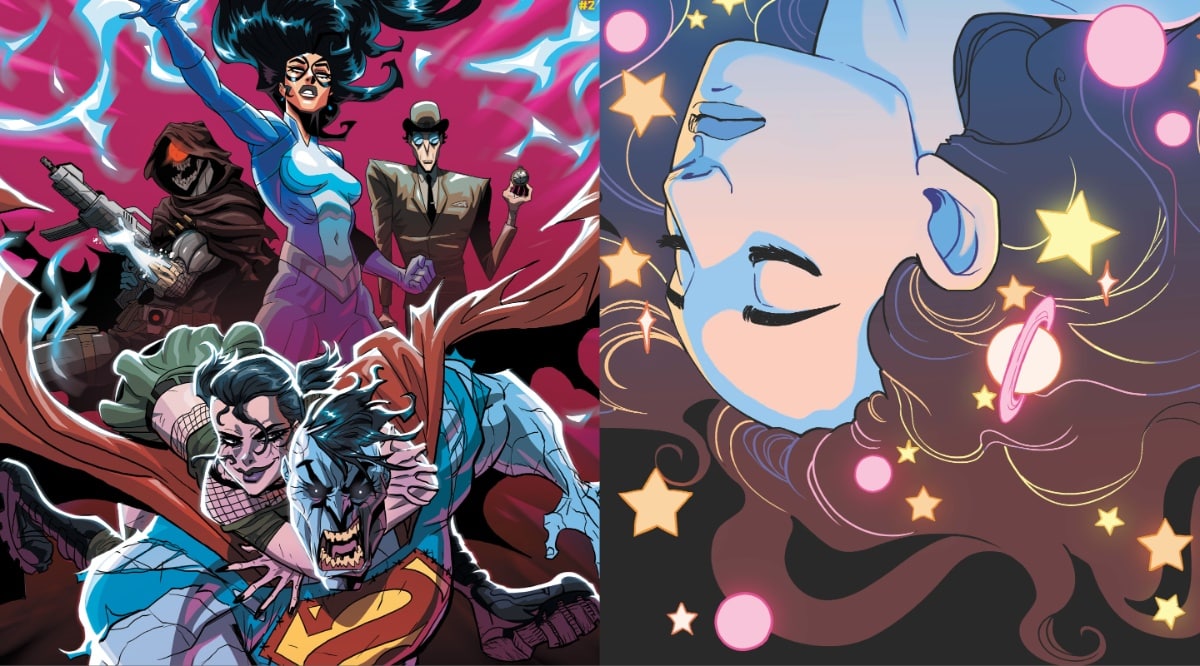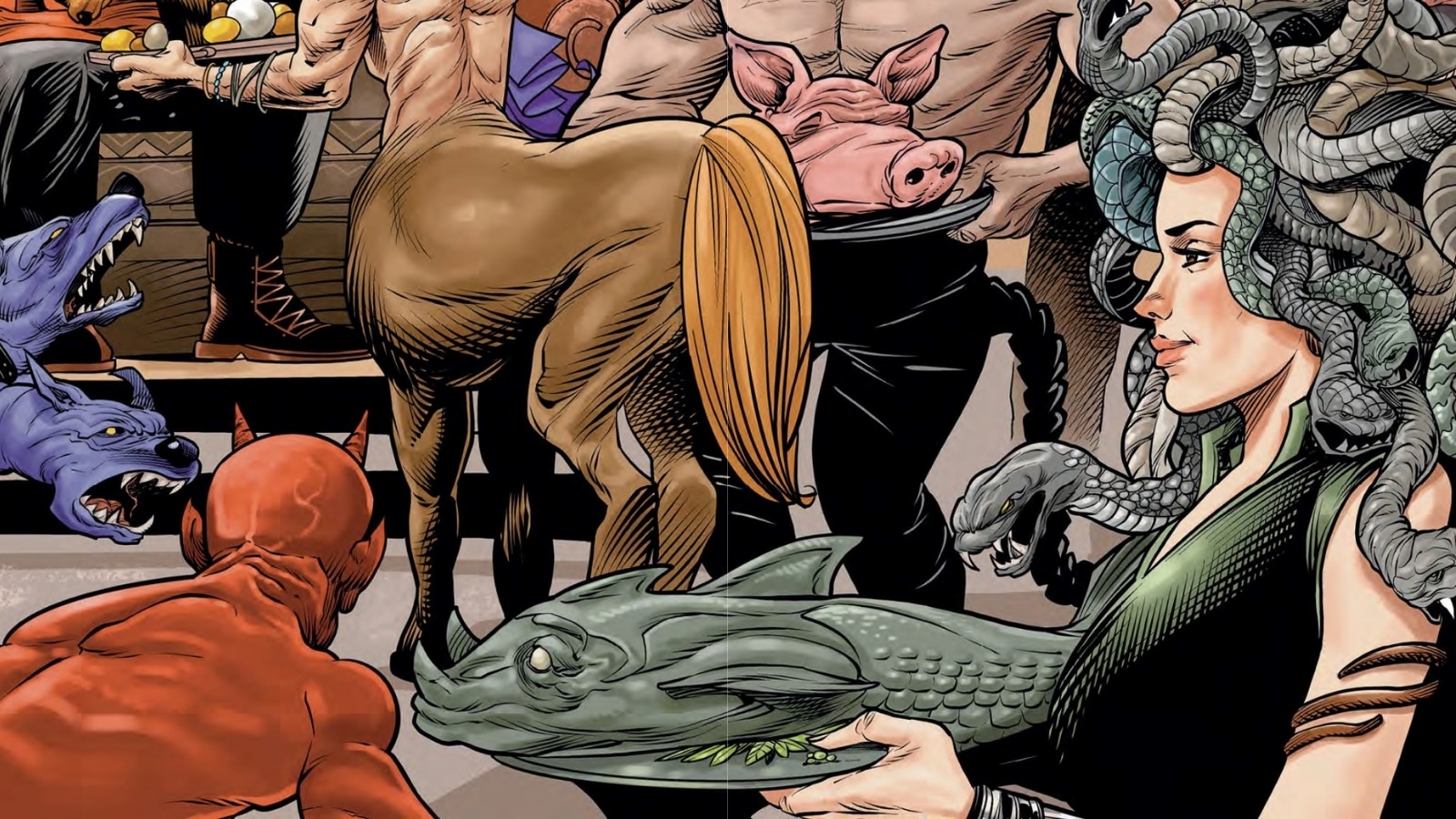Oh I thought I was done with the new 52 links…but I’m Not!!! Here is a Village Voice interview with Marv Wolfman,
which is interesting for many reasons. Because Wolfman is always a thoughtful commenter on the comics industry and its may pressures, but also because CRISIS ON INFINITE EARTHS –and NEW TEEN TITANS by the same Wolfman/Perez team — is to the New 52 generation OF CREATORS what Fantastic Four #1 (the 1961 one) was to so many before it. With its sweeping changes, dramatic deaths and multiple universes, it set the stage for many a crisis to come. And, famously, there was talk after CoIE of doing a line-wide issue #1 reboot. The idea lay dormant until now. But Wolfman points out that for an event to be an event it should have actual motivation:
Did you foresee the rise of crossovers megaevents when you wrote Crisis? And now that the Summer mega-crossover has become an industry staple, do you see ideas that in retrospect you would have liked to have used in Crisis, and do you see others using your motifs from Crisis in newer megaevents?
No. Crisis was created to solve a specific problem: to make the confusing DC universe accessible to new readers. I had thought it would do its job and the focus of attention would then be on the new books and not the title that changed them. But what happened was not only did the book sell incredibly well, but because I was able to develop its story and concepts over time, and not rush it into print, the book was actually quite good beyond serving its purpose. But its sales is what made everyone suddenly decide to copy the concept. Unfortunately, from what I know, most of the mega-crossovers that followed didn’t have a core reason for their existence as Crisis did. The creators did not have the time to work out their stories and they sort of rambled without purpose. In a way, Crisis spawned an entire industry of mega-events when it should have only given birth to those kinds of events where something vitally important had to be achieved. Sadly, it didn’t turn out that way so these days you often here the term “event fatigue” being bandied about.
New 52 is the last arrow in the crisis quiver…or it should be. But we’ll see.









If memory serves, it was Marvel’s Secret Wars that kicked off all this crossover-event/shake-up-the-line nonsense. Crisis came a year or so later.
I’ll respond – Crisis was announced 3-4 years before Secret Wars which was a comic based on a toy line and not a story premise. It was also was rushed into print to come out before Crisis. Marvel did that back then. There had been several company wide crossovers before, but usually as merchandising items – Marvel also had a tabloid sized book whose name I forget. But Crisis was conceived first and advertised (we thought we’d come out earlier but to get the story to work took more time than anticipated). It was also the first one designed to accomplish specific goals of altering the company’s universe.
I’d also add that it was thanks in part to the rise of the Comic Book shop that paved the way for all company wide crossovers and “events”. I doubt very much if either DC or Marvel could have or would have been able to proceed with all these series had their main avenue of sales continued to be newsstands, grocery stores and convenient stores.
“is to the New 52 generation what Fantastic Four #1 (the 1961 one) was to so many before it.”
Doesn’t that assume there is a “the New 52 generation?” I think kids love comics and are going to continue to love comics, but I think Bone has already established itself as the comic for this generation.
I would further guess both Bone and Naruto served as the introduction for this generation to comics. I think the question that has to be asked, and DC didn’t answer it with JL #1, is why would kids raised on Naruto and Bone care about superheroes?
When was Crisis first announced? According to Wikipedia, the first issue of Secret Wars had a May 1984 cover date. The first issue of Crisis was April 1985. That’s almost a year. If Marvel rushed their series into print in response to a Crisis advertisement from DC, that ad must have been put out there by the summer of ’83 at the latest. And given that they had to coordinate it with a toy merchandiser, it seems they would have had to have it in the works a good while before that.
And Secret Wars did result in several line-wide changes–Spider-Man’s alien costume, She-Hulk joining the FF, a new Spider-Woman, a new direction (and series) for The Thing, and probably a few others. You’re making it sound like the Marvel equivalent of the Super Powers series Jack Kirby did, which as memory serves, was also for a toy line. I remember Secret Wars being considerably more than that.
That said, I recall Crisis as being far better executed than Secret Wars. But I think it deserves far more historical significance than you’re granting it.
Robert: OOPS I left out two crucial words — the New 52 generation OF CREATORS.
I recall a house ad for Crisis under it’s working title in ’83 or early ’84 as well as a mention or two in Dick Giordano’s Meanwhile column. Also the Monitor started showing up in various DC titles well before SW was announced.
@Robert: I don’t know anything about the dates of Secret Wars vs Crisis, but I think the larger point about having an effect on the companies’ “universes” (can there be multiple “uni”verses?) that Mr Wolfman is making is this:
The DC crossover was designed not as a way to cash in, nor as a marketing exercise to sell toys, but as a legitimate attempt to clear up the confusion that had set in with so much continuity and so many continuity conflicts.
I think that’s a good idea, despite the fact that I think “continuity” may be one of the most destructive forces against creativity in superhero comics. But at that time, and to some degree today still, monthly comics were soap operas and needed to maintain a consistent storyline.
I.e. “Does Superman have a dog or not?” Not “if we made Superman have a dog, we could sell an action figure of it”.
“Crisis” (though not under that final title) was being talked about in Dick Giordano’s “Meanwhile” columns as early as 1983. It wasn’t fully formed, but there were numerous plugs for upcoming Big Changes as part of a Big Epic. I’m pretty sure Marv Wolfman was attached as writer at that point.
(Wolfman also talked about his desire to do a major housecleaning / streamlining of DC continuity in a Green Lantern lettercolumn in 1981, in response to a letter calling him out on a perceived continuity error. I don’t know that he had sold DC on the project that early on though.)
And Crisis got a slow buildup over the entire DC line throughout 1984 in the form of the Monitor’s teaser appearances in every DC title (including Alan Moore’s Swamp Thing and GI Combat), while Secret Wars was coming out.
Secret Wars always read to me as something that was thrown together over a weekend (esp. WRT Shooter’s blithe use of Dr. Doom in spite of Doom being off the table due to a slow-burning “presumed dead” storyline in Byrne’s Fantastic Four); a toy tie-in mandate would be right in line with that.
–Chris K
Marvel’s Contest of Champions (1982)
I’ll answer. 1: Chris K is right about the GL letter in 1981 where I talked about fixing continuity. This is in the forward to the first issue of Crisis as well as reprinted later, too, but I wrote that letter column answer the day I was leaving for a convention. While waiting for others to show up I actually put the basics of what would become Crisis together. I told the others of it on the train ride to Pennsylvania. The next Monday I pitched the book, under the title History of the DC Universe and DC accepted it. So I began work on it in 1981 but decided that we should publish it in 1985 for the 50th anniversary.
2: The first mention of the book, under the History title, was at a DC-created convention in New York. I forget the year, but it was probably between 1982-1983. We talked about it on a panel. We also had a house ad appear under the History title.
3: Because of the coordination needed, Crisis was well known in the industry (before the internet) long before it was even begun. Most people at DC at the time were scared of the idea of changing everything they grew up with and griped and complained about it. If you look at the books there were almost no crossovers until mid-way through, AFTER the book began to sell so well and the one or two people who did cooperate with it showed increased sales on their titles. Then everyone wanted to be part of it.
4: Finally, Crisis was conceived only to fix the DC universe. There were no tie-ins. It was not done to publicize toys or anything else. As I said, there had been other crossovers before, but none were designed to actually effect a company.
I am impressed with this writer’s content. This content is engaging, thought-provoking and motivational. There are many unique ideas shared in this article that I can relate to and understand.